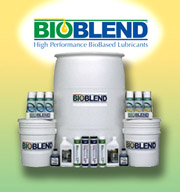Lubricant Storage & Handling - Doug's Tip of the Month


One of the most important but overlooked aspects of proper lubricants and lubrication, is storage, handling and transport of the lubricants.
Storage of lubricants should be in proper containers, which are clearly labeled, to aid in preventing cross contamination.
- All openings on bulk storage or drum containers should always be kept closed with proper venting, preferably with desiccant breathers. Desiccant breathers help prevent the ingression of contaminants, both in the air such as dust or dirt as well as water content from humidity or a moist environment.
- Containers should be kept in an area with adequate lighting and ventilation.
- Lubricants should always be stored with proper containment in case of a spill.
- Storage areas should always be clean and free of clutter.
Handling and Transport of lubricants should always be in airtight, sealed, color-coded, and clearly labeled container. As part of handling of the lubricants, filtration should be considered.
- Proper filtration should be used to move lubricants to bulk storage and then again from bulk storage to the transport container.
- Optimally, the lubricant should be filtered again before going into the equipment.
- Filtering systems and carts should have designated pumps and hoses to aid in preventing cross contamination.
- Filtering lubricants and maintaining clean oil can extend the life of the lubricant as well as extend the life of the equipment being lubricated. An acceptable level of cleanliness is established via the ISO Cleanliness code which is determined by the OEM of the equipment being lubricated.
Improper handling and/or storage of lubricants can easily result in cross-contamination or cross-mixing of oils, which can be very detrimental not only to the lubricant, but also the equipment that it is lubricating. Improper mixing of lubricants can cause oxidation, additive loss, and changes to viscosity.
If you were to cross contaminate a Gear Oil and an R&O Hydraulic fluid, for example, where only a hydraulic fluid was required it could result in the gear oil attacking (chemically corroding) yellow metals that are found in bearing materials. This is due to the EP – (Extreme Pressure additives) found in Gear Oils. On the other hand, diluting the EP additives in gear oil with an R&O Hydraulic fluid could result in inadequate lubrication for a heavily loaded gear set where Gear Oil is required.
With any lubricant, proper storage and handling should always be the best practice. Keep in mind, that it is easier and less expensive to keep contaminants from entering a lubricant and/or prevent cross contamination, than it is to remove the contaminants or solve the cross contamination issue after the fact.



